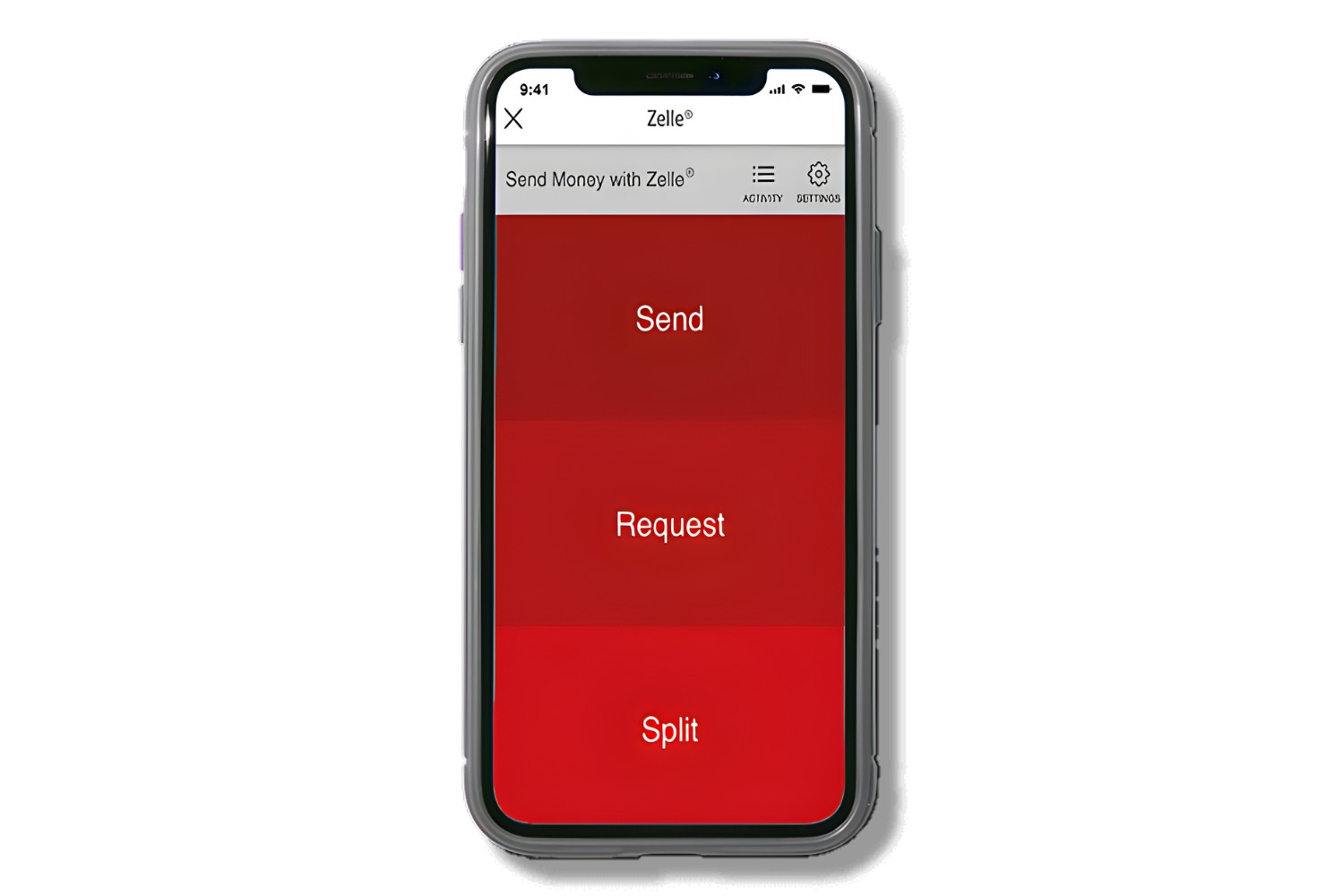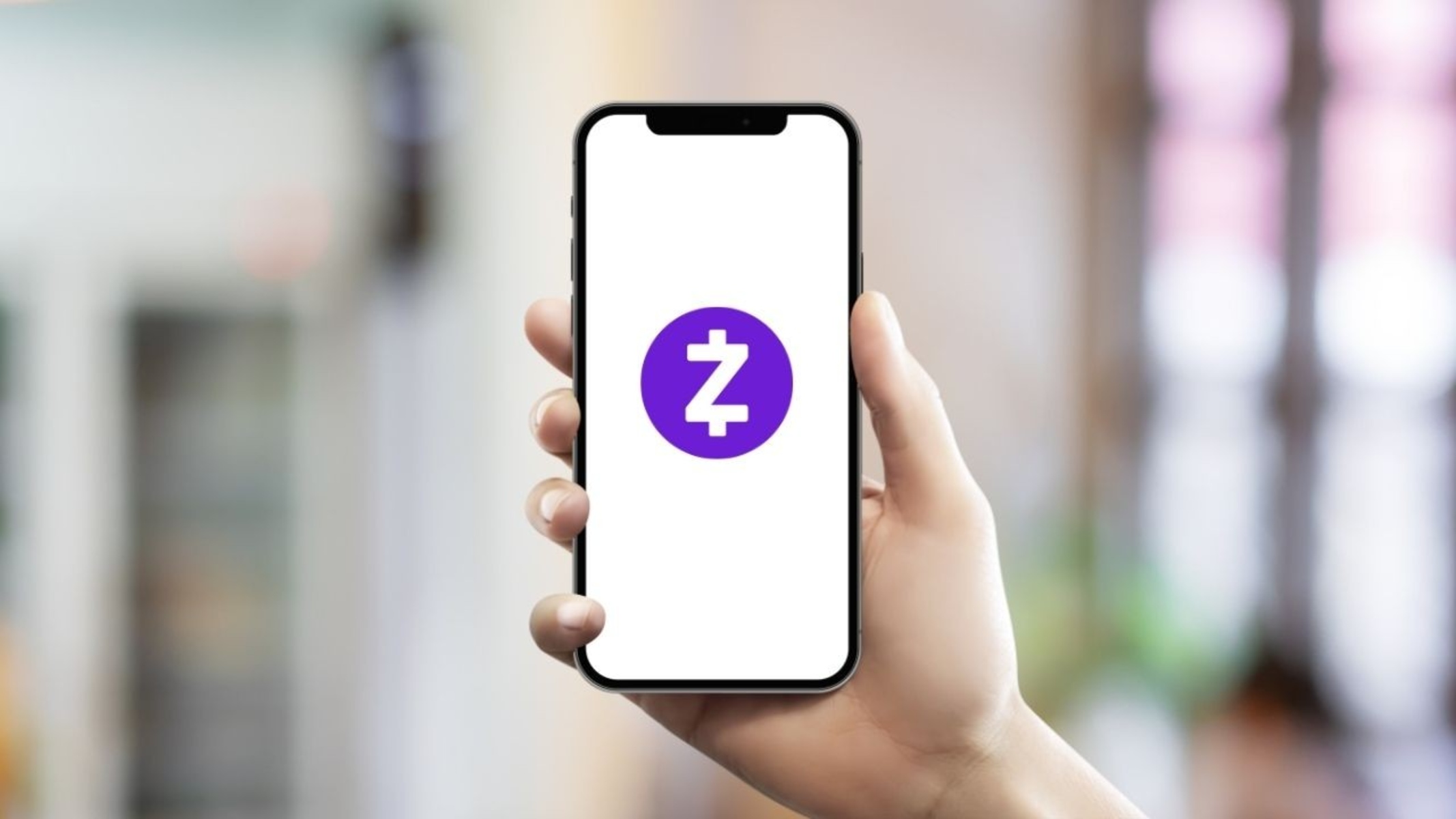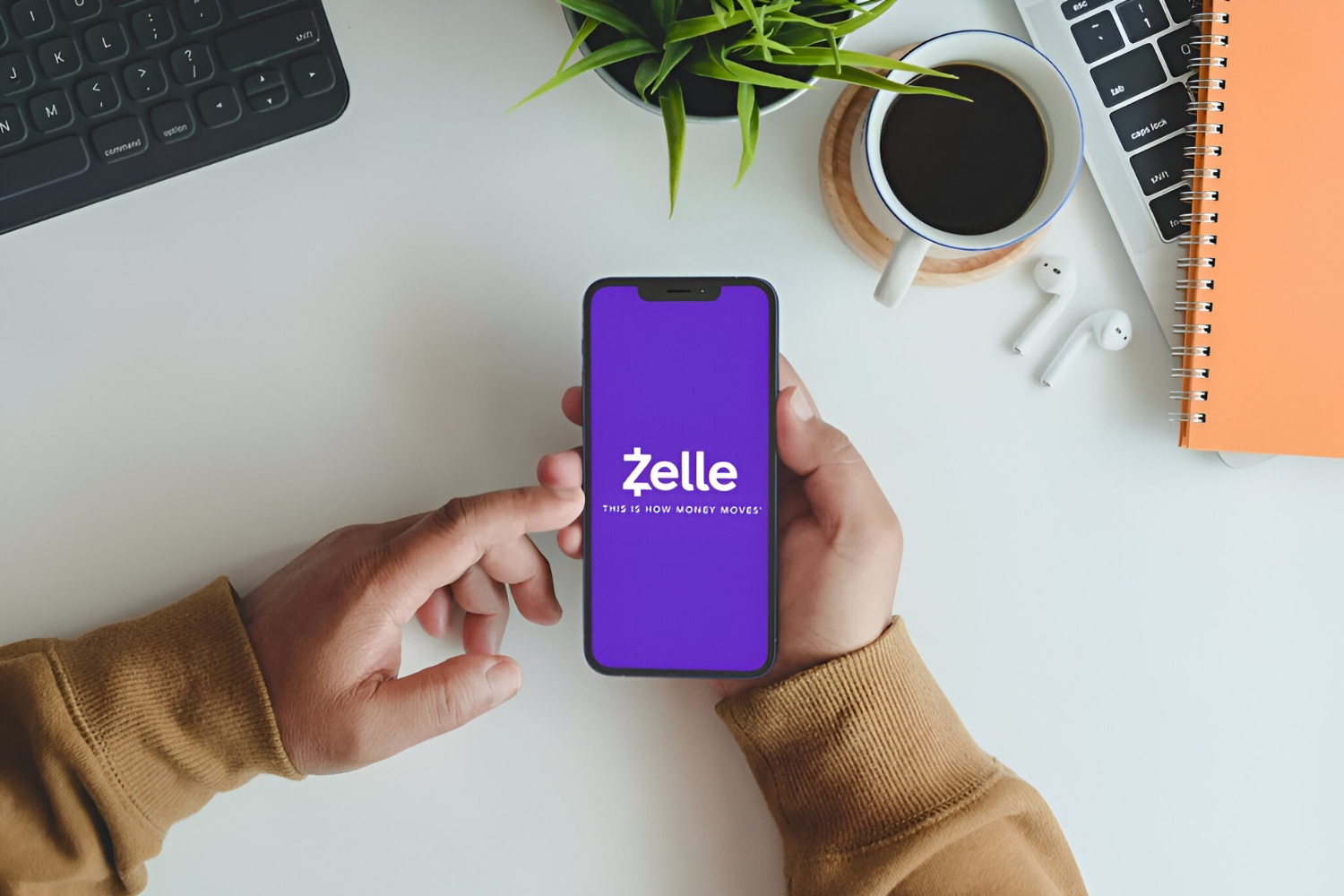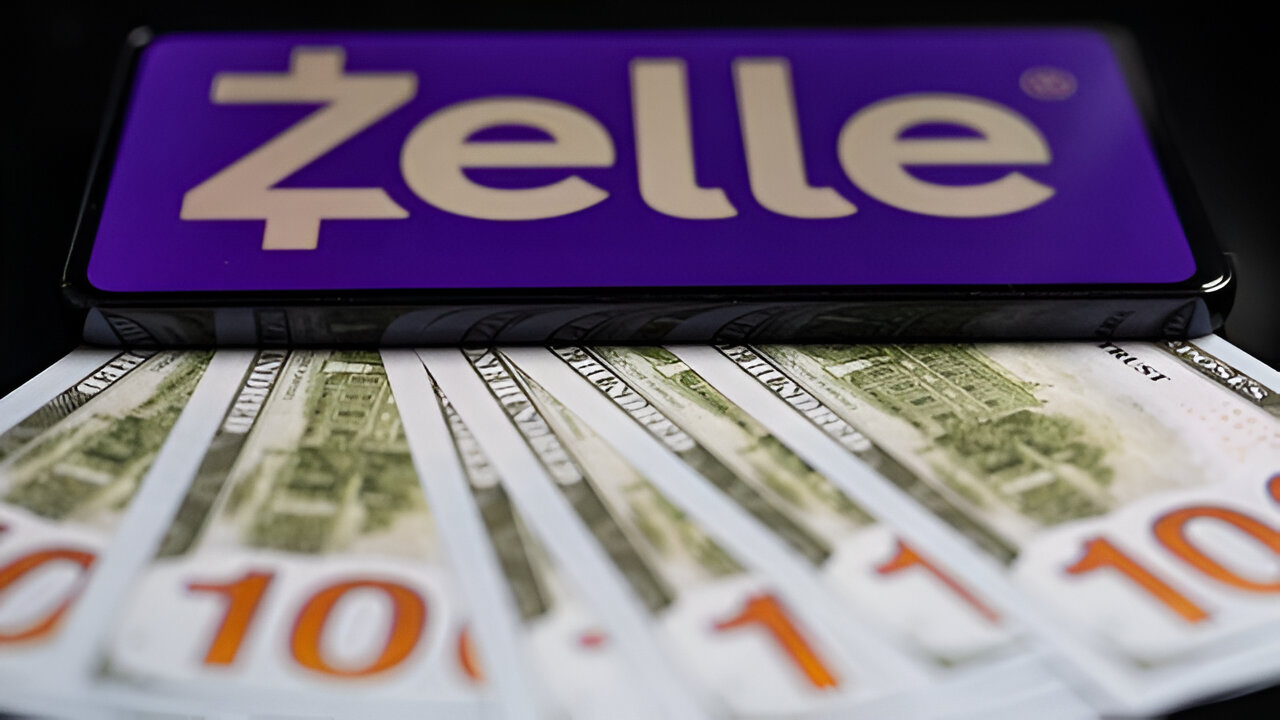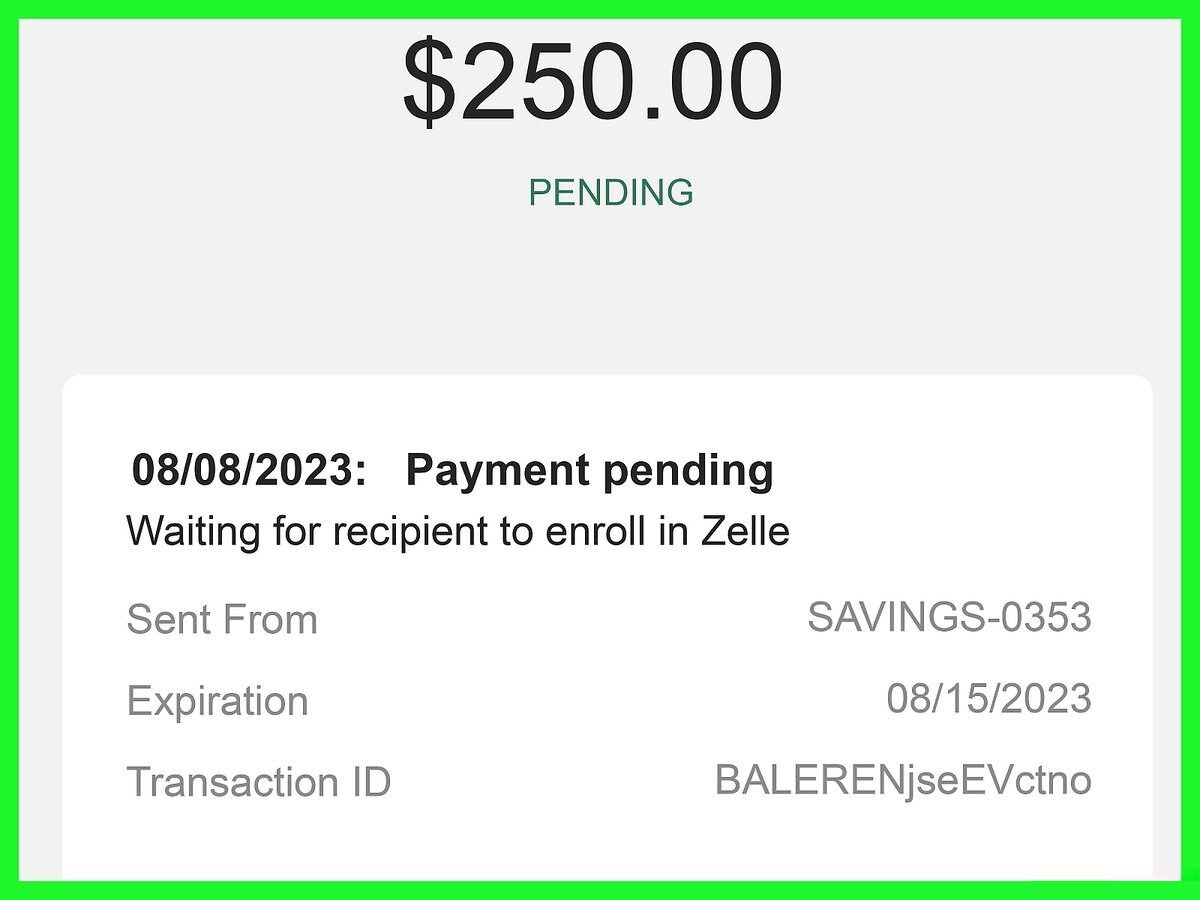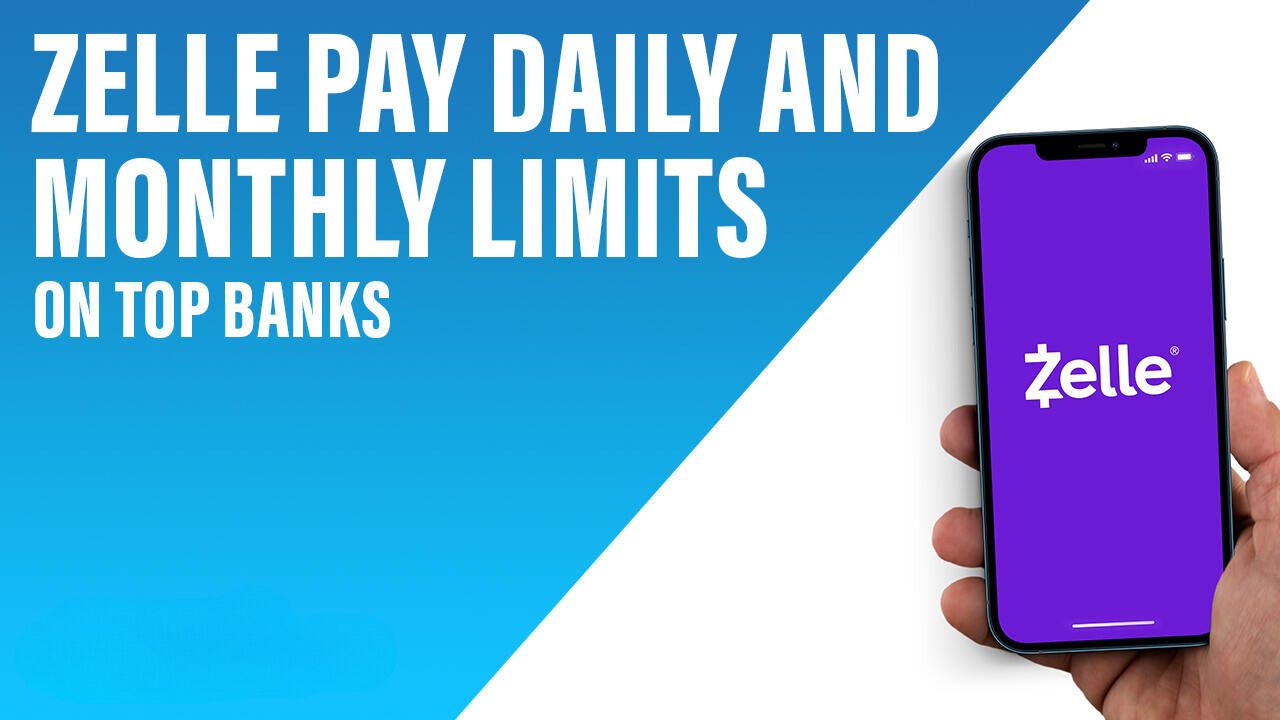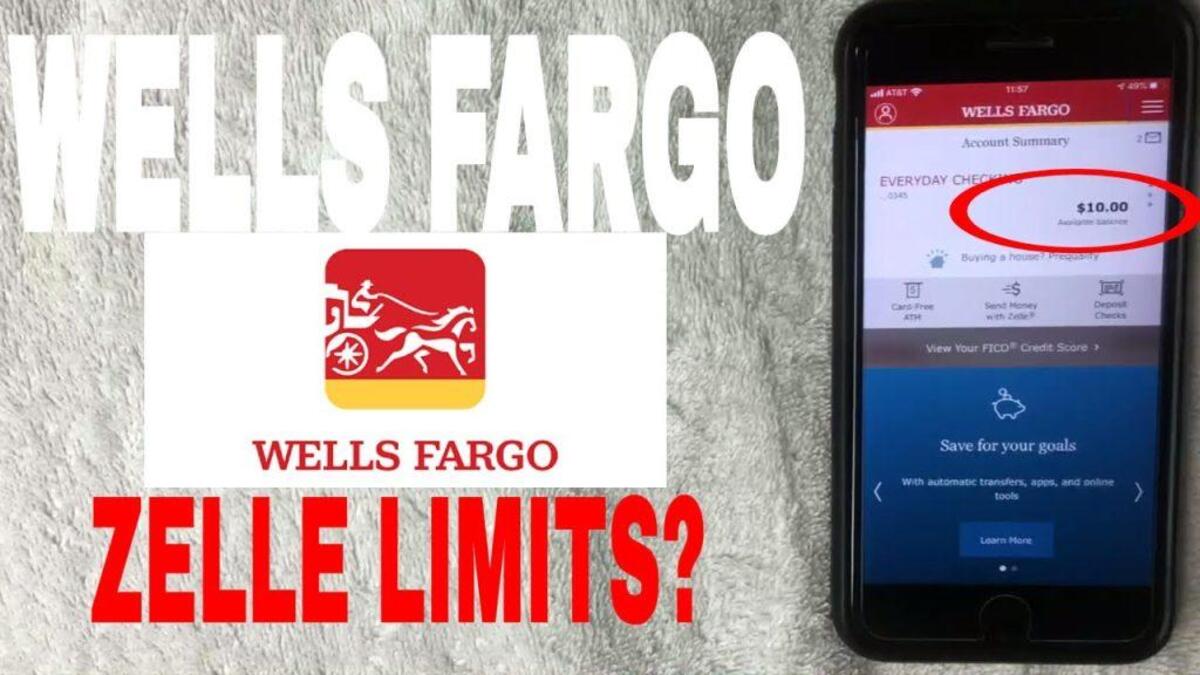What is Zelle
Zelle is a popular digital payment platform that allows users to send and receive money quickly and securely. It was established in 2017 as a joint venture between several major U.S. banks, including Bank of America, JPMorgan Chase, and Wells Fargo, among others. With Zelle, users can transfer money from their bank accounts directly to another person’s bank account, usually within minutes.
One of the standout features of Zelle is its convenience. It is integrated into the mobile banking apps of participating banks, making transactions seamless and hassle-free. To use Zelle, all you need is a bank account and a valid email address or mobile phone number linked to that account.
Zelle eliminates the need for checks or cash, offering a modern and efficient way to pay friends, family, or even small businesses. Whether you want to split a dinner bill, pay your share of the rent, or send money to your child at college, Zelle provides a simple and secure solution.
Another key advantage of using Zelle is its widespread availability. Most major banks in the United States are members of the Zelle network, meaning their customers can easily access and use the service. Additionally, many credit unions and smaller banks have also joined the platform, further expanding its reach.
Zelle’s popularity has been steadily increasing since its launch, with millions of transactions being processed every day. Its user-friendly interface, fast transfers, and strong security measures have made it a preferred choice for many individuals and businesses.
In summary, Zelle is a digital payment platform that allows users to send and receive money quickly and securely. It offers convenience, availability, and a user-friendly experience. Whether you need to send money to a friend, family member, or small business, Zelle provides a reliable and efficient solution.
How Does Zelle Work
Zelle simplifies the process of sending and receiving money by leveraging the existing infrastructure of participating banks. Here’s a step-by-step breakdown of how Zelle works:
- Enroll: To use Zelle, you need to have a bank account with a participating bank that offers Zelle. Most major banks in the United States are members of the Zelle network. Simply enroll in your bank’s mobile app or online banking platform to get started.
- Choose a Recipient: Once you’ve enrolled in Zelle, you can choose a recipient to send money to. You can send money to anyone with a U.S. bank account, as long as they also have Zelle enabled through their bank.
- Enter Payment Details: After selecting the recipient, you’ll need to enter the payment details, including the amount you want to send and any additional notes or descriptions related to the transaction. You can also categorize the payment as a personal payment or a payment to a business.
- Confirm and Send: Double-check the payment details and confirm the transaction. Once you click send, the money will be deducted from your bank account and sent to the recipient’s bank account directly.
- Recipient Notification: The recipient will receive a notification via email or text message, depending on the contact information you provided. They will be instructed on how to accept the payment and direct it to their bank account.
- Funds Availability: Once the recipient accepts the payment, the funds will typically be available in their bank account within minutes. The exact availability depends on the recipient’s bank and their policies.
It’s important to note that both the sender and the recipient must have a bank account with participating banks to use Zelle. If either party’s bank does not offer Zelle or is not part of the Zelle network, the transfer will not be possible.
In summary, Zelle streamlines the process of sending and receiving money by leveraging the infrastructure of participating banks. By enrolling in Zelle through your bank, choosing a recipient, entering payment details, confirming the transaction, and notifying the recipient, you can seamlessly transfer funds between bank accounts.
Sending Limits for Zelle
Zelle has certain limits in place to ensure the security and integrity of transactions. These limits determine the maximum amount of money you can send through Zelle within a specific timeframe. It’s important to be aware of these limits to avoid any potential issues when sending money. Below are the general sending limits for Zelle:
- Personal Sending Limits: Most banks initially set a default limit of $500 per day and $1,000 per month for personal Zelle transfers. However, these limits may vary depending on your specific bank and account type. Some banks offer the option to increase these limits upon request or with additional verification.
- Business Sending Limits: Zelle also allows businesses to send and receive money using the platform. The sending limits for businesses usually differ from personal limits and can vary widely depending on the bank and the type of business account. It’s recommended to check with your bank for specific details regarding business sending limits.
It’s important to note that these are general guidelines, and the exact sending limits may vary depending on your bank and account settings. Some banks may have lower or higher default sending limits, and they may also offer options to further increase these limits based on individual circumstances.
Factors That Can Affect Zelle Limits:
There are several factors that can affect your Zelle sending limits:
- Bank Policies: Each bank has its own policies regarding Zelle sending limits. These policies may vary between different account types and customer profiles.
- Account History and Relationship: Banks may consider your account history and relationship with them when determining your Zelle sending limits. If you have a long-standing relationship with the bank and demonstrate responsible banking behavior, they may be more willing to increase your limits.
- Security and Fraud Prevention Measures: Banks prioritize the security of their customers’ financial transactions. Therefore, they may have certain measures in place, such as setting lower initial limits, to mitigate the risk of fraudulent activities.
Increasing Your Zelle Sending Limit:
If you need to send larger amounts of money through Zelle, you may have the option to request an increase in your sending limit. Typically, this involves contacting your bank directly and providing additional verification or documentation to support your request. It’s advisable to consult with your bank to understand the procedure and requirements for increasing your Zelle sending limit.
In summary, Zelle has default sending limits for personal and business transfers, but these limits can vary depending on your bank and account settings. Factors such as bank policies, account history, and security measures can affect your Zelle sending limits. If necessary, you may be able to request an increase in your sending limit by contacting your bank and fulfilling any additional verification requirements.
Personal Sending Limits
When using Zelle for personal transfers, there are certain sending limits that you should be aware of. These limits determine the maximum amount of money you can send through Zelle within a specific timeframe. While these limits are set by your individual bank, here are some general guidelines:
- Default Limits: Most banks start with a default daily and monthly sending limit for personal Zelle transfers. Typically, the initial default limit is set at $500 per day and $1,000 per month. However, it’s important to note that these limits can vary depending on your bank and account type.
- Bank Variances: Banks have the flexibility to set their own specific sending limits for Zelle transfers. Some banks may have lower or higher default limits compared to others. Additionally, certain account types, such as premium or high-net-worth accounts, may have higher default limits from the start.
- Increase Options: If you require higher sending limits for personal transactions, many banks offer the option to request an increase. This typically involves contacting your bank directly and providing additional verification or documentation to support your request.
- Account Verification: To increase your personal sending limits, banks may require verification steps to ensure the security of your transactions. These steps can include confirming your identity, providing proof of income, or demonstrating a consistent transaction history.
It’s important to note that the exact sending limits for personal transfers can vary significantly depending on your bank and account type. Some banks may have higher default limits, while others may have lower initial limits to mitigate the risk of fraudulent activities.
Factors That Can Impact Personal Sending Limits:
Several factors can influence the personal sending limits set by your bank:
- Account History: Your bank may consider your account history, including the length of your banking relationship and the frequency and size of your past transactions. If you have a long-standing and trustworthy account history, your bank may be more inclined to increase your sending limits.
- Customer Profile: Banks take into account various factors related to your customer profile, such as your credit score, income level, and overall financial stability. These factors can influence the bank’s decision on whether to grant a higher sending limit.
- Security Measures: Banks prioritize the security of their customers’ financial transactions. As a result, they may have lower default limits initially to minimize the potential risks associated with fraudulent activities on the platform.
In summary, personal sending limits for Zelle transactions are determined by your individual bank. While default limits typically start at $500 per day and $1,000 per month, these limits may vary based on your bank and account type. Factors such as account history, customer profile, and security measures can impact the decision to increase your personal sending limits.
Business Sending Limits
Zelle also offers businesses the ability to send and receive money, providing a convenient way to handle transactions. However, the sending limits for businesses may differ from those for personal transfers and can vary widely depending on the bank and the type of business account.
Here are some important considerations regarding business sending limits with Zelle:
- Bank Variations: Each bank has its own policies regarding business sending limits. These policies may differ between various types of business accounts and may be influenced by factors such as the size and type of business.
- Higher Limits: Compared to personal sending limits, business sending limits often tend to be higher. This is because businesses may have larger transaction volumes and financial needs.
- Bank Communication: To understand the specific sending limits for your business account, it is recommended to reach out to your bank directly. They can provide you with details on the default business sending limits and any options to request higher limits if necessary.
- Verification and Documentation: Banks may require additional verification and documentation from businesses to support requests for higher sending limits. This can include providing details about your business, financial statements, or relevant legal documentation.
- Customized Solutions: Some banks offer customized solutions for businesses, allowing for tailored sending limits based on individual needs. This can be particularly beneficial for businesses with unique transaction requirements or higher volume transfers.
It’s important to note that the specific business sending limits can vary greatly depending on the bank and the type of business account. Different banks may have different default limits, and they may also provide options to request higher limits based on the individual circumstances of your business.
If your business regularly engages in large transactions or requires higher sending limits, it’s advisable to contact your bank to discuss your specific needs and explore any available options for increased sending limits.
In summary, business sending limits with Zelle can vary depending on the bank and the type of business account. These limits are often higher than personal sending limits due to the larger transaction volumes associated with businesses. To determine the specific sending limits for your business account and explore options for higher limits, it’s recommended to communicate directly with your bank.
Factors That Can Affect Zelle Limits
When it comes to Zelle limits, there are several factors that can influence the specific limits set by your bank. Understanding these factors can help you navigate and potentially increase your sending limits. Here are some key considerations:
- Bank Policies: Each bank has its own policies regarding Zelle sending limits. These policies may vary based on various factors, such as customer type, account type, and overall risk assessment. Some banks may offer higher default limits, while others may have lower initial limits in place.
- Account History and Relationship: Your bank may consider your account history and relationship with them when determining your Zelle sending limits. If you have a long-standing banking relationship with the bank and have demonstrated responsible banking behavior, such as maintaining sufficient funds, your bank may be more inclined to increase your limits.
- Risk Assessment: Banks have stringent security and fraud prevention measures in place, and these measures play a crucial role in determining sending limits. Banks may initially set lower limits to mitigate the risk of fraudulent activities. As you establish a history of secure transactions, the bank may be more open to increasing your limits.
- Customer Profile: Your personal or business profile can also impact your Zelle sending limits. Factors such as creditworthiness, income level, and financial stability can influence the bank’s decision on whether to grant higher sending limits.
- Transaction Frequency and Amount: Your past transaction history and the frequency and size of your transfers can also contribute to the determination of your sending limits. Consistent and responsible transaction behavior may indicate a lower risk profile and lead to higher sending limits.
- Security Measures: Banks prioritize the security of their customers’ financial transactions. While this is beneficial for protecting your funds, it can also result in initially lower sending limits. These limits are put in place as a precautionary measure to ensure the safety of your transactions.
It’s important to note that each bank has its own criteria and processes for evaluating and modifying sending limits. If you feel that your current limits are restricting your transaction needs, it’s advisable to contact your bank directly to discuss your situation and explore the options available.
Increasing Your Zelle Sending Limit:
If you require higher sending limits for Zelle transfers, many banks provide the option to request an increase. The process for increasing your limits typically involves contacting your bank and providing additional verification or documentation to support your request. This may include proving your identity, income verification, or providing evidence of a stable financial profile.
It’s important to remember that each bank has its own requirements and procedures for increasing sending limits. It’s recommended to consult with your bank to understand their specific process and any supporting documents they may require.
In summary, several factors can influence your Zelle sending limits, including bank policies, account history and relationship, risk assessment, customer profile, transaction history, and security measures. While each bank has its own criteria, many offer the option to request an increase in your limits. Contacting your bank and providing the necessary verification and documentation can help you navigate the process of increasing your Zelle sending limits.
Increasing Your Zelle Sending Limit
If you find that the default sending limits provided by Zelle are not sufficient for your needs, you may have the option to request an increase in your sending limit. While the process may vary depending on your bank, here are some general steps to help you navigate the process:
- Contact your Bank: Begin by contacting your bank’s customer service or reaching out to your account representative. Inquire about the process for increasing your Zelle sending limit and ask for their guidance on the necessary steps.
- Provide Verification: Banks typically require additional verification in order to grant higher sending limits. Be prepared to provide documentation such as proof of identity, proof of income, or other relevant documents to support your request.
- Explain Your Needs: Clearly communicate your reasons for needing a higher sending limit. Whether it’s for business purposes, personal transactions, or other specific needs, providing a clear explanation can help the bank understand your situation better.
- Demonstrate Responsible Banking Behavior: Banks put a strong emphasis on responsible banking behavior and a history of secure transactions. If you have a consistent track record of maintaining sufficient funds, making timely payments, and exercising caution with your account, highlight these factors to support your case.
- Consider Account Upgrades: In some cases, upgrading your account type with your bank may automatically provide higher sending limits. Explore options such as premium or business accounts that offer increased transaction capabilities as part of their features.
- Be Patient and Persistent: It’s important to remember that each bank has its own evaluation process, and it may take some time for your request to be processed. Be patient and persistently follow up to ensure that your request is being addressed.
During the entire process, maintain open and clear communication with your bank. Understanding their requirements and providing the necessary documentation in a timely manner will help expedite the process of increasing your Zelle sending limit.
It’s important to note that while many banks offer the option to request higher sending limits, there is no guarantee that your request will be approved. Each bank has its own policies and criteria for evaluating such requests. However, being proactive and providing a compelling case can increase your chances of obtaining an increased sending limit.
In summary, to increase your Zelle sending limit, contact your bank, provide the necessary verification and documentation, clearly explain your needs, demonstrate responsible banking behavior, consider account upgrades, and maintain open communication throughout the process. While there is no guarantee of approval, following these steps can help improve your chances of obtaining a higher sending limit.
Sending Money Through Zelle: Best Practices
Zelle offers a convenient and secure way to send money to friends, family, and businesses. To ensure smooth and hassle-free transactions, it’s important to follow some best practices when using Zelle:
- Double-check Recipient Information: Before initiating a transfer, ensure that you have entered the recipient’s information accurately. Verify the recipient’s email address or mobile phone number to avoid sending money to the wrong person.
- Confirm Account Availability: Ensure that the recipient’s bank account is enrolled in Zelle and able to receive funds. Confirm with the recipient before initiating the transfer to avoid any potential issues or delays.
- Set Appropriate Payment Limits: Consider setting payment limits that align with your comfort level and transaction needs. While Zelle has default sending limits, some banks allow you to set lower limits to enhance control over your transactions.
- Protect Your Account Information: Keep your Zelle account login credentials, such as your username and password, secure. Avoid sharing this information with others to prevent unauthorized access to your account.
- Be Cautious with Unknown Recipients: Exercise caution when sending money to individuals you don’t know personally or who are unfamiliar to you. Verify their identity and the purpose of the transaction to mitigate the risk of potential scams or fraudulent activities.
- Keep Track of Transactions: Maintain records of your Zelle transactions, including dates, recipient names, and payment amounts. This will help you keep track of your financial activities and serve as a reference if any issues or disputes arise in the future.
- Report Suspicious Activity: If you suspect any unauthorized transactions or notice suspicious activity in your Zelle account, contact your bank immediately. Promptly reporting any concerns can help protect your funds and prevent further losses.
- Stay Updated with Security Measures: Stay informed about the latest security measures and recommendations provided by your bank or Zelle. This includes regularly updating your mobile banking app, enabling multi-factor authentication, and being aware of common scams or phishing attempts.
- Use Secure Networks: When initiating a Zelle transaction, ensure that you are connected to a secure and trusted network. Avoid using public Wi-Fi networks or shared devices to prevent unauthorized access to your personal and financial information.
By following these best practices, you can enhance the security and efficiency of your Zelle transactions. Remember to stay vigilant and exercise caution when sending money to ensure a positive experience with Zelle.
In summary, utilize these best practices when sending money through Zelle: double-check recipient information, confirm account availability, set appropriate payment limits, protect your account information, be cautious with unknown recipients, keep track of transactions, report suspicious activity, stay updated with security measures, and use secure networks. These practices will help you navigate Zelle transactions safely and securely.
Conclusion
Zelle is a convenient and secure digital payment platform that allows users to send and receive money quickly and easily. With its integration into the mobile banking apps of participating banks, Zelle provides a seamless way to transfer funds between bank accounts, typically within minutes.
In this article, we explored various aspects of Zelle, including what it is and how it works. We discussed the sending limits for personal and business transactions and the factors that can affect these limits. Additionally, we provided tips on increasing your Zelle sending limit and best practices for sending money through Zelle.
It’s important to remember that Zelle’s default sending limits may vary depending on your bank and account type. Banks may offer options to request higher limits based on individual circumstances, such as account history, customer profile, and security measures. By following best practices and implementing security measures, users can maximize the benefits and minimize the risks associated with Zelle transactions.
Always double-check recipient information, confirm account availability, and protect your account details to ensure accurate and secure transactions. Stay vigilant and report any suspicious activity to your bank. Keeping track of your transactions and staying up-to-date with security measures are key in maintaining a safe and positive experience with Zelle.
Zelle continues to grow in popularity as a leading digital payment platform, offering individuals and businesses a convenient and efficient way to transfer money. As Zelle evolves, it’s important to stay informed about any updates or changes that may occur within the platform.
In summary, Zelle provides a seamless and secure solution for sending and receiving money. By understanding the sending limits, factors that can impact these limits, and following best practices, users can make the most of their Zelle experience and enjoy the benefits of fast and secure digital payments.










